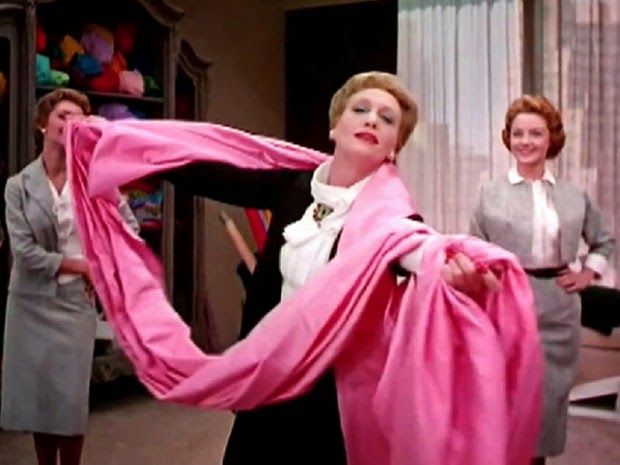In 1957 MGM and Stanley Donen produced a musical film called Funny Face, with Fred Astaire, Audrey Hepburn and Kay Thompson. The film was ostensibly a satire of the fashion industry and the ephemeral nature of style. But what it was also, was a remarkable picture of how completely our notions about the way we look, and how often we need to alter that, (or even that we need to alter that at all) had shifted in the post war era.
The vast machine that had been constructed to help move WWII forward, had involved manufacturing at every level and in all categories; and no less was this true in apparel than in any other sphere. But after the war ended, what were we going to do with all this manufacturing muscle? If we didn't continue producing at the level we had achieved during the War, people would lose jobs, the economy would slow, and inflation would escalate rapidly. So, in an effort to keep that from happening, and to keep the profits rolling in, manufacture turned to the concept of "new is better" to keep things going.
The musical number in the film that nails this concept down solidly, is the first one you see; Think Pink. The editor of the fashion magazine Quality, is searching for an inspiration for the next issue, and settles on a color theme; which sparks a massive surge in manufacturing across the industry. The implication that consumers could be motivated to ditch perfectly good items in their wardrobes, because some complete stranger told them to, is powerful, and the satire is both dead on, and viciously arch.
The 1940s, post war, saw the beginning of a trend that continues today, and has in fact only gained speed and force. Replacing clothing and accessories that are not worn out, because they are no longer cool. But along with that came an even more distressing concept that is rife in the apparel industry. Shoddy is good enough. If a person is going to buy a pair of kicks for 150$ and throw them away in 6 months because Nike says so, why bother making sure they are well constructed? So makers of goods are foisting off incredibly ill made clothing on us, and getting us to pay dearly for them. Win for them, but no one else.
The final, and perhaps most salient thing in the musical number is the idea of the connection between the fashion press, manufacturers, and the buying public. It is the design community that largely calls the shots, demanding of manufacturers to make what they decide is sellable, and the buying populace is at the end, not the beginning, of that chain. Sure, if we as customers don't purchase something we're presented, it won't get presented again any time soon; but the prevalence of myriad constantly changing trends, insures that the makers of product end up winning, if for no other reason than the sheer bulk of what is out there.




OK, whoever produced "The Devil Wears Prada" ought to be prosecuted for plagiarism. The whole nose-in-the-air procession into the office, disdainfully ignoring the lowly secretaries, the office itself, the placement of the desk, the art on the wall, the windows in the background, all derived almost reverentially from this scene. And the really fun irony is that Miss Prescott wouldn't be caught dead in pink, but remains resolutely garbed in her timelessly chic gray and white.
ReplyDelete